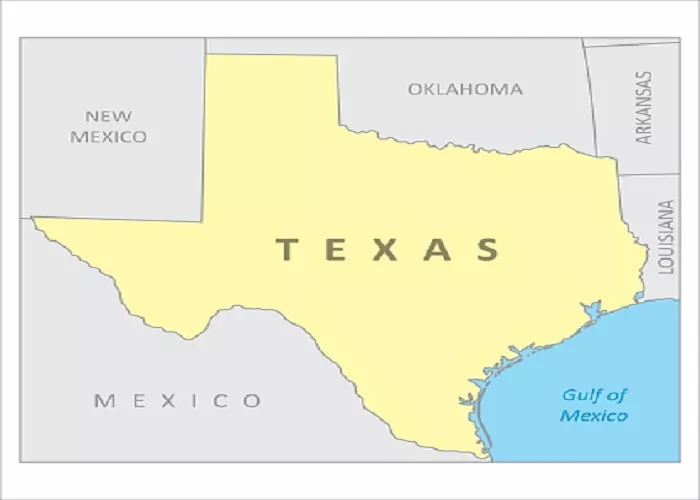Texas, often referred to as the “Lone Star State,” is the second-largest state in the United States, both in terms of area and population. Located in the south-central region of the country, Texas shares its borders with several U.S. states and international territories. Understanding these boundaries provides insight into Texas’s geographical and cultural connections.
States Bordering Texas
Texas shares its borders with four U.S. states:
Oklahoma: Located to the north of Texas, Oklahoma shares a border that stretches approximately 540 miles.
Arkansas: To the northeast, Arkansas borders Texas for about 260 miles.
Louisiana: Situated to the east, Louisiana shares a border with Texas that is roughly 300 miles long.
New Mexico: To the west, New Mexico borders Texas for approximately 280 miles.
In addition to these U.S. states, Texas shares an international border with Mexico to the south and southwest, extending over 1,200 miles. This extensive border with Mexico includes the Mexican states of Chihuahua, Coahuila, Nuevo León, and Tamaulipas.
Geographical Features Defining Texas’s Borders
Several natural features define Texas’s borders:
- Rio Grande: This river forms a significant portion of the southern boundary between Texas and Mexico, flowing along the border for about 1,241 miles.
- Red River: To the north, the Red River serves as a natural boundary between Texas and Oklahoma, as well as parts of Arkansas.
- Sabine River: This river delineates part of the eastern border between Texas and Louisiana.
Historical Context
The borders of Texas have evolved over time. Originally an independent nation known as the Republic of Texas from 1836 to 1845, Texas defined its boundaries through treaties and negotiations before joining the United States. The state’s borders were established through various agreements, including the Treaty of Guadalupe Hidalgo in 1848, which set the Rio Grande as the boundary between Texas and Mexico.
Importance of Texas’s Borders
The extensive borders of Texas have significant cultural, economic, and political implications:
- Cultural Exchange: The proximity to Mexico has led to a rich blend of cultural influences, especially evident in cuisine, language, and traditions.
- Economic Activity: Bordering multiple states and an international boundary facilitates extensive trade and commerce, making Texas a vital hub in the U.S. economy.
- Strategic Significance: The borders play a crucial role in national security and immigration policies, requiring coordinated efforts between state and federal authorities.
Interesting Facts About Texas Borders
- Texas is the only state that borders eight states. Wait, no! As we clarified earlier, Texas actually borders four states. However, due to its large size and central location, Texas has a significant impact on the region and is often associated with many neighboring states.
- The Red River forms a significant portion of Texas’s northern border. The Red River is a major geographical feature in the region and has played a crucial role in the history and development of Texas and its neighboring states.
- Texarkana is a unique city divided between Texas and Arkansas. The city of Texarkana is located on the border between Texas and Arkansas and is divided between the two states. Each side of the city has its own government, but the two sides work closely together to provide services to residents.
- The Sabine River forms the border between Texas and Louisiana. The Sabine River is a major geographical feature in the region and has played a crucial role in the history and development of Texas and Louisiana.
- El Paso is a major cultural and economic hub near the Texas-New Mexico border. The city of El Paso is located near the border between Texas and New Mexico and is a major cultural and economic center in the region. The city is known for its rich history, diverse culture, and stunning natural beauty.
Conclusion
In summary, Texas shares its borders with four U.S. states—Oklahoma, Arkansas, Louisiana, and New Mexico—and has an international border with Mexico. These boundaries are defined by a combination of natural features and historical agreements, contributing to Texas’s unique geographical and cultural identity.

